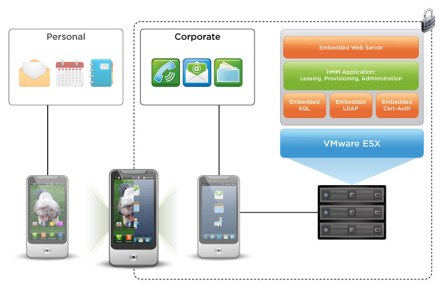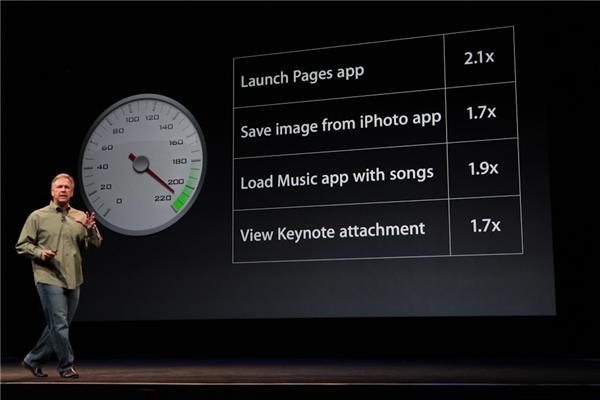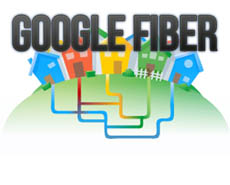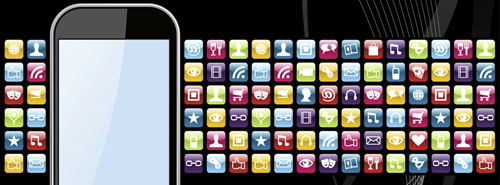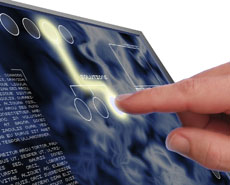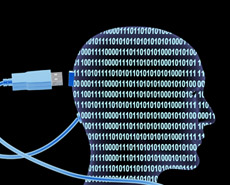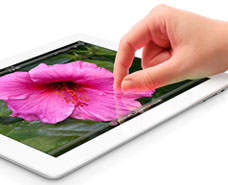“Virtualization” is one of the hottest buzzwords in the IT world today. Virtualizing servers has become a common practice in most large IT shops. We have recently seen the introduction of virtualization with graphics processing cards (GPUs) And of special interest to executives and IT professionals exploring Bring Your Own Device (BYOD) for their business, smart phone virtualization may present a solution to security and privacy concerns. Even without the intentional practice of BYOD, the flood of personal smart phones and tablets entering the workplace raises many questions about security. Today’s workers demand the flexibility to work not just from employer-provided desktops or laptops, but from personal smart phones and tablets. As these devices encourage out-of-office connectivity, productivity and responsiveness, most companies are loath to discourage such behavior. But when personal devices are used to access corporate email, applications and data, both the personal privacy demands of the user and the enterprise’s security and control requirements are simultaneously in need of control points and protection measures. The same goes for company provided consumer devices, which end up being used not only for business, but the inevitable access of personal email, data and media. So how to build a wall between the personal and corporate worlds, even when using just one device? Virtualization may hold the key. One of the industry leaders in virtualization, VMWare, has recently unveiled their “MVP” (Mobile Virtualization Platform) that will allow a company to introduce iOS and Android devices securely into the enterprise. The access is controlled via a separate workspace on the mobile device that is entirely controlled by the company. Essentially, personal and business applications and usage are separated. The user of a mobile device MVP-enabled now has 2 personas: Personal and business. The user can toggle between...
Personal Data Value
Staying safe and secure
Ever wondered what happens after you close your browser and end yet another session online? Have you ever felt like you’re being watched – and maybe even gossiped about – by those persistent tracking cookie monsters as you blaze a trail via your browser? If you ask yourself why anyone would care about your interests and what happens to the zillions of pieces of search data generated daily, the answer is simple: information is power. Our personal data is the most valuable asset class of the 21st century. Cookies are not the only way our activities are monitored. Every online action is stored in cyberspace, regardless of the device used, be it PC, laptop, or cellphone. Every transaction is a little piece of puzzle that will generate our consumer profile. Being smart about protecting this data is our new personal challenge – and a far more complicated task than stashing physical valuables and personal paperwork in a safe deposit box. Companies have already started the race to cash in. Azigo, Mydex, The DataBanker, and Personal.com are offering a cloud-based hub that allows users to safely store and/or remove their personal digital information from everything from medical records to music and financial reports. For many users, the biggest complaint about the online environment today is privacy concerns. But we still manage to be pleasantly amazed by search engines that “read our minds,” returning suggestions extremely close to what we’re looking for after typing in just a few letters. (These “miracles” are made possible through browsing history and cache. This data is now available across all devices, so it follows you from phone to laptop to tablet, as long as you’re signed in to your Google or Apple account.) Another common complaint is the stream of...
Let’s talk smartphones
Apple Conference 2012
Ever since Apple’s rebirth as a tech leader, the company’s release conference is one of the most talked about industry events of the year. The tight-lipped culture of Apple usually means that Mac rumors were largely speculative – no one on the outside really knew what to expect until the day finally arrived. While there were a number of upgrades and improvements announced during Wednesday’s iPhone 5 release announcement, I was disappointed to see that there weren’t many surprises. One of the pillar traits of the conference, a true reveal of the new product features, was toppled thanks to a number of leaks during the last few weeks, the majority of which turned out to be true. Here’s what Apple confirmed today: Taller screen: It’s still the same width but Apple has increased the height from 3.5” to 4”. It’s still one of the smallest in the market so why does this matter? According to Apple, it improves user experience by providing more visible space above the virtual keyboard but by keeping the width the same you can still comfortably use the iPhone with one hand. Touch screen: Touch sensors were built into the display glass which enabled Apple to bring the phone down to a slim 7.6mm thick. 4G LTE: A consistent point of argument for competitors and a pain point for Apple fans during the 4S release last year, the iPhone 5 does have LTE now and Apple claims to have done it right by engineering around the standard battery suck that is traditional LTE service. Aluminum backing: Opposed to the glass backing that we saw on previous versions, the iPhone 5 housing is glass on the front and aluminum on the back, a reflection of their notebook design. A6 CPU Chip: The competitors are all running the Dual-core 1.5 GHz Snapdragon S4 and while we don’t have a comparison chart for Snapdragon vs. A6 we can see that Apple has given users a significant boost in performance (image, above, from CNET.com) from their previous A5 chip. Camera: Few improvements were made here from the 4S regarding resolution but it does claim faster photo capture, a low light mode, a built in stabilizer, an improvement to the panoramic photo setting, as well as the ability to snap pictures while shooting video. Microphones: Apple added another microphone from the 4S for a total of 3; they can be found on the front bottom, top, and the backside top near the camera. New connector: If you’ve had an iPod at all since 2003 you are familiar with this 30 pin connector, nicknamed Lightning. A few additional upgrades will be coming from the new operating system, iOS 6, update that will be released on Tuesday, September 19. When can they be ordered and how much does it cost? Devices can be pre-ordered Friday, September 14 and phones will arrive in stores exactly one week later. The price point hasn’t changed for the newest phone; with a new two year contract a 16GB will cost $199, 32GB $299, and 64GB $399. If you’re willing to sacrifice a few upgrades you’ll be able to pick up the 4S 16GB for $99, or an 8GB iPhone 4 for free. One big big disappointment is the lack of NFC (near-field communication) which has been available on Android phones for over a year. The technology is still in adoption infancy but is making significant progress with programs like Google Wallet. However, looking at the way Apple handled LTE, perhaps they’re simply not happy with the current technology and are looking for a way to do it better. If you’ve looked at the numbers you know that despite all the hype, Apple doesn’t come close to a majority market share for consumer smartphones – Android has that title with over 68%. That being said, Apple does have devoted (and vocal) user-enthusiasts. There has always been an outstanding...
Google Earth 3D
Now on iOS
The world is not flat. So why settle for a map without topography, ever? Bringing 3D maps to mobile has been a race between Google and Apple, with Google sprinting over the finish line with Google Earth 3D for the iOS platform last month. The Google Earth app is compatible with the latest Apple devices – iPhone 4S, iPod touch, and 2nd & 3rd generation iPads. Apple has yet to offer its own comparable feature. Users on older device models can use the maps if they’re running iOS 4.3 or later. Through the 7.0.0 version, Google reveals to iOS users what Android devotees have been seeing since June of this year. Here’s a video that demos the product for Android: 14 major regions are already converted to Google’s 3D imagery: Los Angeles, San Francisco Bay Area (including the Peninsula and East Bay), Boston, Boulder, Charlotte, Lawrence (Kansas), Long Beach (Calif.), Portland, San Diego, Santa Cruz, Tampa, Tucson, and Rome (Italy). By the end of the year there’s a promise to add more cities worldwide. It’s a complex, high-tech process to build these maps, entailing strategic fly-overs of metropolitan areas with camera-equipped planes that flew in tight circles to get shots at 45 degree angles. Back on the ground, the high-resolution imagery and local geometry are put back together, creating 3D tiles that can be viewed from any angle. Virtual tours are no novelty these days, but Google, as always, is aiming for innovation. Over 11,000 virtual tours of popular sites in over 110 countries and regions can be revealed swiping the tab located at the bottom of the main Google Earth screen. These pre-created tours will dynamically be updated with interesting locations in thumbnail size for a broader palette to choose from in the...
Google Fiber
TV + Internet, not cereal
While it is true that Google Fiber contains no vitamin D or riboflavin and in no way contributes to a healthy diet, it does promise some fun prizes in the bottom of the box: 1000mB/second = 100x faster that average Internet speeds Hundreds of channels, plus NetFlix, Hulu, YouTube all in one place Optimized HD clarity Record 8 programs simultaneously on 8TB storage space Here is Google’s hipster-tisement for the service, which will have you singing “Just What I Needed” for the rest of the day: Pricing is divided into three tiers. Broadband-only service is free (see below); 1Gbps service is $70/month; 1Gbps + television is offered at $120/month. A further $300 “construction fee” for the Internet and television services is waived if you sign a contract (broadband-only customers have to pay). The television service comes with a Nexus 7 tablet that also acts as a remote control. And now for the bad news: you can’t have Google Fiber… yet. Bringing in fiber requires a hefty infrastructure upgrade so Google is rolling things out slowly and only to communities that express the highest level of interest. Kansas City is ground zero for the nation’s first “fiberhoods” and pre-registration ending Sept. 9 will determine which areas in the city are first to receive the new service. As for everyone else, well, we could be a while away but once the trial run in KC gets underway in earnest, you can expect pre-registration to open in additional cities. The big idea here is less about the technical specs – the average Internet user doesn’t need and might not even notice 100x faster service – and more about Google’s bid to dominate modern media. Google has pacted with Rovi to license its media technology to power its...
Snapdragon S4 Pro
Qualcomm's quad core tablet
Qualcomm’s Snapdragon S4 Pro quad core tablet is close to consumer release, a moment much awaited by developers interested in making apps and games for the S4 Pro platform. Early reviewers report that they are impressed by the speed, performance and graphic capabilities of the SoC tablet and anticipate it breaking to the front of the Android pack. Here’s a look at the features: SoC stands for System-on-Chip devices that hold the electronics for a complete, working product on a single chip. Imagine the microprocessor, the digital signal processor (DSP), RAM and ROM, and graphics processor, all on a small chip with an ancillary reduction in power. The result is tremendous speed and mobility. In August of last year, Qualcomm was introducing the Snapdragon classification of its chips and mobile solutions, ranked after the processor’s power in S1, S2, S3, and S4 classes. To simplify things, the company presented afterwards four secondary versions for the superior class S4: Prime, Pro, Plus, and Play. The top version S4 Prime is meant for smart TVs and home theater systems, but the following version, S4 Pro, is the one that made it to the tablets and ultraportable ARM, a bit more appealing to the public. It is loaded with goodies and gadgets, including: 4 Asynchronous Quad CPU cores running at up to 1.5GHz; Adreno 320 GPU; 10.1 inch display running a 1366 x 768 resolution; 13 Megapixel Camera with Flash; 1080p HD video and playback; 7 microphones; 2GB of RAM and 32GB of inbuilt storage running on Android 4.0.4 Ice Cream Sandwich; Android 4.0 ICS; 5200 mAh battery; Charging dock with two USB 2.0 ports, port for HDMI and Ethernet. The APQ8064 CPU, named Asynchronous Symmetric Multiprocessing or SMP, has the ability to be clocked at different...
Google Handwrite
Search, no typing required
If you have a touchscreen mobile device, Google is adding a third search feature to the usual typing-voice command combo. If you have an iOS5+ device, Android 2.3+ phone, or Android 4.0+ tablet, starting right about now you have the option to hand write search requests directly onto the screen. Here’s a peek at the new technology in action (WARNING: this video contains upbeat music & whimsical/potentially annoying search scenarios): Print and cursive writing in 27 languages is currently supported but if your cursive is messy you will probably run into a lot of mistranslated words, hopefully to comedic rather than disastrous effect. The immediate advantages seem pretty obvious: It’s faster than typing. More accurate than voice command. Great for people with big/clumsy fingers prone to double-keying. Effective workaround for disabled users who struggle with typing or voice. Writing on the screen is more fun. Activation is simple. From any mobile browser, load the Google home page. Scroll down to the bottom of the screen and tap “Settings” (tablet users, tap the gear icon to open the Settings page). Find the “Handwrite” setting and tap the enable option; scroll to the bottom of the page and tap the blue “Save” button. Now that it is activated, reload the Google home page and the Handwrite icon (a little cursive “g”) will be displayed in the bottom right corner, just tap that to turn the handwriting feature on and off. You may now begin writing. Go ahead and write on the whole screen, don’t feel like you have to stay within the tiny search box lines. Brief experimentation reveals that drawing little pictures is not yet supported – I drew a feline shape, but was not offered anything even vaguely LOLcats related. Maybe that’s on deck...
OS X Mountain Lion
New OS syncs devices
Two majestic felines were spotted this week: a wild mountain lion on the UC Berkeley campus, and the OS X Mountain Lion, the new feline addition to the Mac family. In the case of the first lion, authorities advise not hiking alone, and if the animal is encountered, stand your ground and try to appear large by raising your hands. In the event of an attack, be aggressive and fight back. (To be fair, mountain lion attacks on humans are extremely rare.) In the case of the OS X Mountain Lion (OS X 10.8), we are dealing with a tame and educated feline. At $19.99, its price point is $10 less than the previous Lion version. OS X Mountain Lion doesn’t want to eat you for lunch, but to make your life easier and your compatible Mac devices more seamless and communicative. A central octet that’s improved in this version is the Messages/Safari Browsing/Game Center/AirPlay Mirroring/Notification Center/Sharing/Power Nap/Dictation. These features are now able to unify their functionality on all of your devices. Just sign in to iCloud once and it’s all set. You can now reply to messages received on your iPhone from your Mac because iMessage has landed here also; messages will appear on all your devices, allowing you to start your conversation on your Mac and keep chatting from your iPad or iPhone, having the complete history stored on all devices (including photos and HD videos); Safari flaunts its unified Search field; the system will return the most relevant results based on bookmarks, browsing history and other data. Users will have the luxury to switch from Mac to iPad, picking up the browser where they left off. Moreover, it saves entire web pages in your Reading List (not just the URLs)...
iPhone Tricks
Get more from your phone
Having sold 35.1 million iPhones and 11.8 million iPads during the first three months of 2012, Apple is one of the world’s most ubiquitous technology companies. Chances are, you own one of these devices. But do you use it to its full potential? Even a longtime iPhone user may learn a few things from these helpful tricks. Photo functionality: if you don’t like taking photos on your iPhone by pressing the virtual shutter button on the screen, you don’t have to. You can use either the increase (+) volume button on the left-hand side of the phone, or the button on the headphone cord. The latter method cuts down shaking of the phone after you’ve framed up your shot. Sending multiple photos: Trying to send more than one pic at a time by email or text message? All you have to do is open the Photos app, tap on the album you want to send your photos from, tap on the right top corner icon and choose those you wish to forward. Tap Share in the bottom left of the screen and choose Email, Message or Print. Define words: A few months ago Apple added a built-in dictionary that you can access with all apps that let you select a word within an email, iBooks, and text messages. Once you select a word, a pop up is displayed with the option to “Define” its meaning. Wet iPhone: You are not the first or the last to drop yours in a sink or – heaven forbid – the hot tub. If it happens, leave the phone turned off (to avoid short-circuiting), and gently towel it dry. Never use a hairdryer as it can push the moisture into areas that aren’t wet. If you have a...
A Look Into iOS 6
Apple operating updates for fall
Your favorite Apple devices – the iPhone 3GS, iPhone 4, iPhone 4S, iPad 2, third-generation iPad, and the fourth-generation iPod touch – get a makeover with the new iOS 6 upgrade that will be rolled out this fall. The announcement, made during the keynote speech to the Apple Worldwide Developers Conference, went into some detail about what we can expect from the newest iteration of the popular operating system: 3D maps. This is a big leap forward for Apple, and a shot across Google’s bow in the increasingly bitter rivalry between the two companies. Designed completely in-house, the new iOS 6 maps function utilizes a vector-based engine to render locations – this means ultra-crisp graphics, fast and smooth panning & zooming, and ample incentive to explore. Functionality includes turn-by-turn navigation, real-time traffic information and alternative routing, fly-over mode with photo-realistic 3D views, full Siri compatibility, and a host of local search options. More Siri. You’ve probably already seen the cute commercial featuring John Malkovich chatting with Siri. iOS 6 expands Siri’s range of functions. Instantly receive sports scores, stats, and schedules. Find movie locations, showtimes, and much more. Browse restaurants with a host of sorting options and make reservations effortlessly. More languages supported than ever before. Full social networking without having to type a word. Updated phone & email. New calling features allow you to respond to declined calls with a text message or a reminder, or turn on a “Do Not Disturb” sign that only lets through your most important callers. Email interface is streamlined for ease of reading & writing. New Passbook app. Keep all of your boarding passes, retail coupons, movie tickets, loyalty cards, and more all in one place. At-a-glance organization of balances, important dates, and updates. Leave your wallet...
The App Economy
Room for growth in real estate
Ever wondered how apps – those fun little programs on your iPhone, iPad or Android that do cool things like provide your bank balance, tell you when your mortgage is due or give you the latest local weather forecast – have influenced our tech economy? Studies show that application development is quantifiable as its own economy. Last year, it was determined by analyst Michael Mandel (published by TechNet), that the app market has added 466,000 jobs to the US economy since 2007. That number has surely increased by tens of thousands in the last 12 months, as Mandel called app development a “job leader” in America’s continuing post-recession recovery. While apps are only a small fraction of the technology industry, they represent one of the fastest growing new fields. For iPhone and iPads alone, there are over 500,000 apps serving over 845 million users, numbers that are growing daily. Tack on the growing number of applications for Android and other devices and the app explosion is exponential. Zynga has been one poster child for app-driven success since the industry’s nascent stages. The company, which currently employs nearly 3,000 workers, has recently purchased the space needed to add thousands to the workforce in coming years. Fellow San Francisco app company Airbnb is doing the same. These two companies, along with Twitter, and other smaller tech/app creators expanding in the Bay Area have triggered a regional real estate boom that has led to rising rents, low apartment vacancy rates and inflated housing prices. It’s just one regional example of the power the app economy can wield. Worldwide, enterprising app developers seeking investor funding are pressing forward with the confidence that the industry will only continue to grow, particularly beyond smartphones and tablets. According to Business Insider, annual tablet sales will pass personal computers in three years or less. They quantify apps at a $10 billion market, growing at 100 percent per year. The transition to using apps for anything and everything – this week I used an app to budget for the coming month, pay my smartphone bill, pick out a movie, and find out when the tide would be out at the beach near my home – is a consumer shift that will continue to evolve. For the real estate industry, apps are being developed to meet immediate needs like marketing and rent remittance, but that reach is likely to expand quickly as tablet use becomes even more pervasive. The youngest technology users – teens – will have a much different experience than you and I are used to, and it will be app driven. Current products focus mainly on finding real estate to purchase, looking at purchase price or appraisal value data, and other services for the home buyer. Fast forward five years (or maybe just two) and imagine that you are looking for an apartment. Rather than heading for your bulky desktop and waiting several minutes for the Internet to load up, you’ll access your smartphone or tablet and have instant fast wireless connectivity. Using a search app, you’ll quickly be able to bring up any available apartments in the geographic area you’ve selected. With the push of a finger you can express an interest in that available apartment unit or request an appointment for a showing. The leasing agent can text you back with an available viewing time, or if you’re searching from out of the area, perhaps you’re ready to start your lease application. One more finger tap and you’ll be on your way. For residents, the convenience of app-based rent pay, lease renewal and work order submission will be a no-brainer. Designed to simplify our lives, apps should indeed save time and maximize our efficiency. Apps touching on some of these renting-related tasks already exist, but are yet to be seamless experiences. The app economy will change that. And for property professionals, apps will have different...
Tabletop Computing
What happened after hype?
Has it really already been two years since Microsoft debuted their innovative Surface tabletop computer? That’s a trick question – it’s actually been five years, a veritable eternity in the lifetime of any consumer computing product. Surface was supposed to be the first shot of a revolution in business and game computing, the vanguard of a bold new enterprise technology. How did that work out? Microsoft introduced Surface in May 2007 and the first units shipped a year later. Opportunities to view this curious creature in the wild have been vanishingly rare. Harrah’s picked one up for the bar at their Rio Casino in Las Vegas; Disneyland added one to their Tomorrowland exhibit; Sheraton put units in the lobby of five of their hotels worldwide; MSNBC used a Surface on-air during their 2008 election coverage. But they haven’t reached the mainstream business market anticipated by Bill Gates when he forecast a five year time frame for product roll out. After Surface, there were several attempts by various manufacturers to turn tabletop computing into a viable technology, including the Linux MPX, Ideum MT-50, spinTOUCH iBar, and the most recent iTable from PQ Labs. None has been able to meet even the minimal success achieved by the Surface. You’re more likely to see Bigfoot on a Segway or Nessie talking on an iPhone than a human using a tabletop computer… where did they go? Tablets bear most of blame for taking the thunder out of the tabletop computing storm. Tablets and tabletops feature quite a bit of overlap, including their basic design and the touch interface. However, tablets add the ultimate conveniences of portability and a scale that is comfortable – it’s just not easy to relate to a tabletop computer, or consider it as something...
3D Printing
A world-changer?
3D printing (also known as additive manufacturing and stereo lithography) utilizes an extruder to construct objects a single layer at a time, in varying micron thicknesses, according to the specifications of a CAD program. These printers can use a wide range of materials, from various plastics and PVC, to aluminum and titanium. Watch as a rack of fold-up multi-tools is ‘grown’ in just a few hours: The advantages of 3D printing, over traditional manufacturing, are that it is better, faster and cheaper than its predecessor. The technology is in its fourth decade and applications already run the gamut. 3D printing is used for military, medical, engineering tasks of every stripe, and has also been employed to make jewelry and footwear. It has great potential as a future method for creating artificial limbs for amputees. Within the real estate world, architects and developers are familiar with the technology as it is used for 3D rendering of scale building project models that can be presented to investors, owners, approval bodies and financiers. CAD and concept modeling applications are one of the best established consumer uses of 3D printers. So why does this technology still seem to be flying under the radar? Blame popular media coverage, which overwhelmingly focuses on the novelty aspects of the technology (“You can use it to build Legos!”), while simultaneously posturing that widespread access to such devices exists only in the far future. There seems to be an unwritten law that if you write about 3D printing you must, in the title, reference the fact that it will either shape the future or change the world. Heavy hitters like Forbes, CNET, and Technology Review have bought in. There’s even unrealistic concern that consumers with access to 3D printers could “pirate” popular toys...
Google’s Nexus tablet...
Count down to anticipated release
Google Chairman Eric Schmidt revealed in an interview last December that the company was hard at work on bringing a low-cost tablet to market, with a “six month window” until the debut. Since then, trying to piece together the specs for the “Nexus tablet” has been one of the industry’s favorite guessing games. Now with that six month window approaching its close, some of the details are more than mere guesswork. The biggest teaser so far is the price point: Google apparently plans to sell the tablets for just $149. That’s far below what consumers have been shelling out for the iPad, Thinkpad, Galaxy Tab, and other high-end models. It’s also less than what a Kindle Fire costs, which is currently the belle of the ball among the affordable tablet set. At that low of a price, does the Nexus tablet offer enough performance to appeal to consumers? Here’s what we think we know about the Nexus tablet: 7” size runs Ice Cream Sandwich, aka Android 4.0 Snapdragon processor (instead of the previously rumored Tegra 3) Aaaaand… that’s it. Not a lot to work with there, and definitely too early to tell whether the Nexus tablet is going to have enough horses under the hood – along with bells & whistles – to appeal to upscale buyers. A lot of what we think we know is based upon a recent piece of vaporware, the ASUS MeMo 370T. This device, which was shown off in limited fashion at the 2012 CES, featured a 7” display, 1GB RAM, and an 8 megapixel camera, all running on the Ice Cream Sandwich platform, for somewhere in the neighborhood of $250. Now the MeMo 370T has apparently been scrapped, because ASUS is Google’s hardware partner on the Nexus tablet....
Laptop, tablet or ultrabook?...
Business computing options
The campaign towards the perfect device is well underway. Businesses are beginning to accept that they are, perhaps, well beyond the age of the PC. The question now is whether dusk has set on the age of laptops as well. Is the reign of tablets upon us? When it comes to business travel, tablets are the lighter, more space savvy alternative to hauling around a heavy laptop. Beyond lightweight and sleek design, tablets are favored by businesses for their numerous easy-to-use features and shortcuts that access to large quantities of data. Highly customizable apps are growing in popularity with businesses as well. Tablets, however, are currently too limited to serve most businesses adequately. There are two major components that are holding them back: memory and battery life. A Hole in the Armor For a while now, the argument has been that tablets cannot replace laptops for businesses and on-the-go business travelers simply because they do not hold enough memory. For those who need to run programs with ample data, the storage available on tablets remains woefully insufficient. Cloud computing decreases the need for tactile storage space but many consumers have yet to fully embrace the cloud’s potential, both for personal and business applications. The issue of short battery life may soon become moot. Tablet manufacturers are toying with different battery types, overcoming common hurdles such as weight and heat transfer to keep the units compact, powerful, and efficient. At the current moment, there is no tablet that can match a laptop’s performance in a compact package, but that will soon change. The Formidable Foe Though tablet sales are soaring among business and personal consumers, it is unlikely that laptops will be replaced within the next five years. NPD DisplaySearch predicts that by 2017, tablet...
Personal Clouds
Are PC's now passe?
Personal clouds seem to be on everybody’s lips these days. Frequently referred to as the new era of personal computing, the clouds are indeed revolutionary, but what exactly are they and what can they do for us? Essentially, personal clouds are online services that allow consumers to store, share, synch, protect and stream data using multiple connected devices such as smartphones, media tablets and PCs over the internet. Gartner, Inc, a technology research and advisory firm known for delivering specialized insight on various IT areas, acknowledges the huge impact of personal clouds on individual users and expects it to replace the personal computer at the center of our digital lives by 2014. “Major trends in client computing have shifted the market away from a focus on personal computers to a broader device perspective that includes smartphones, tablets and other consumer devices,” Steve Kleynhans, research vice president at Gartner, said in a statement. “Emerging cloud services will become the glue that connects the web of devices that users choose to access during the different aspects of their daily life.” As a result, the future looks even brighter for technology developers. According to Gartner, consumers will spend approximately $2.2 trillion on digital technology products and services in 2012, or about 10 percent of the average disposable household income. By 2015, consumers are expected to spend around $2.8 trillion worldwide on connected devices, affiliate services and transferred contents. Regarded as a real breakthrough in the field of information technology, personal clouds promise to deliver smart solutions to experimented digital users. While consumer needs are extremely varied and expectations differ greatly, the general requirements involve availability, security and access to personal contents without complications or restrictions. This is exactly what personal clouds aim to be, a reflection of...
Let’s Talk Online Leasing...
With Steve Lefkovits
There’s so much talk in the property management industry right now about the future of leasing that we wanted to dive deep into the topic with the help of Steve Lefkovits, Executive Producer of the Apartment Internet Marketing Conference coming up in Arizona next month. Steve is the author of this interesting piece in this month’s Units magazine called Customers as Kings. He agreed to answer some trending questions from us on the apartment industry’s next big thing: marketing and leasing that’s online, mobile and more efficient than ever. TBS: What do you think is more important – mobile friendly property websites or mobile specific apps, and do you need to create both? SL: I think that mobile web sites are more important for attracting residents and mobile apps have more possibilities for long-term engagement with existing renters. Right now 10-20% of web page views during a search come from mobile devices. Some property management companies report even more, depending on how they’re optimizing their lead flow and how many touchpoints they have. It’s obvious that few people are going to install an app in the middle of their search, their far more likely to use their phones on the fly as part of the search. On the other hand, the possibilities are endless for meaningful engagement in a property-level application. The easy things to think of relate just to the property – paying rent, maintenance requests and tracking packages. I think smart companies are going to start focusing more on lifestyle elements in an app that encourage healthy living and neighborhood engagement. If I built an apartment app today it would have neighborhood services and discounts, recipes, exercise information, attractions and events, holiday information and some type of game that made it fun. ...
Do-It-Yourself Computing...
Taking DIY high tech
Do-it-yourself computing has gained momentum in recent years as individuals and businesses seek out ways to eliminate avoidable expenses. Such new technologies may minimize personnel requirements and middle man costs while optimize workplace efficiency. Meet Z1, the future of DIY computing The new HP Z1 workstation aims to reduce user dependency on third party technicians. At first glance, the Z1 is reminiscent of an iMac. The compact, tower-free model is based on an all-in-one design that looks like an effortlessly stunning 27’’ monitor. Upon a closer look, users discover that the monitor can be folded down, flush with the surface upon which it stands. The workstation can then be opened as one would open a laptop. Inside rests the hard drive, memory, and other vital components that can are easily disengaged; no tools are required. Users can easily change out components of the system without much risk. When it is time to upgrade the graphics card or increase the amount of available memory, there will be no need to call a technician. Users may simply order the part online and pop it in themselves. The Energy Star approved Z1 is scheduled for release to the public in April 2012, starting at $1,900. Z1 is the only workstation of its class in the world. Workstation limitations Z1 (and models like it that will undoubtedly follow) do not allow businesses to completely eliminate the IT department altogether. The time and resources needed for basic maintenance may be significantly reduced, yet access to professional services is still a requirement long into the foreseeable future. For example, a layman may easily switch out the hard drive on a Z1 but it will take a specialist to troubleshoot performance problems within the hard drive. Businesses will need the input...
Google’s New Privacy Policy...
What it means for you
If you have any Google services (and who among us does not?) then you probably received multiple notices that on March 1 Google implemented a new privacy policy designed to replace a hodgepodge of 60+ old privacy policies, spread across an array of their services. Google gives their take on it here. The bottom line is, Google keeps and uses a lot of your personal online data: search queries, browsing habits, contacts, emails, and more. If you are interested in minimizing (or completely eliminating) the data that Google keeps, you have options available. Managing your accounts Want to get a handle on your account(s) and maximize your privacy options? Here are some suggestions to help keep sharing to a minimum: Log in to your Google dashboard to get an overview of your Google accounts & services. Explore a little and clear services & data you do not want under your account. Clear your web history – this will erase all items from your web history and stop your web history from being recorded in the future. From your web history page, just click “Remove all Web History.” Opt out of personalized ads. These are generated based upon your search queries or content in Gmail messages. To disable, simply go to your ads preferences page and click “Opt out.” Download your data. Google Takeout allows you to download a copy of all your data stored in Google products. This gives you a bird’s eye view that can help you pick and choose what to keep and what to eliminate. Note: not all products are currently supported. All of these options include varying levels of customization for partial elimination of data sharing: clear only parts of your web history, block only certain advertisers, etc. Taking your...
Computers for Families...
Bridging the digital divide
Santa Barbara County’s Computers for Families project gets students and families access to technology that helps them learn and grow. Computers have become as important today for student success as paper and pencil were just 20 years ago. The goal of CFF is to bridge the digital divide between low-income students who cannot afford technologies in the home and their more affluent peers. Through the organization’s efforts, more than 9,000 computers have been placed into the homes of low-income students, and more than 200 teachers have been trained to improve their instruction by using technologies as teaching and learning tools. Reduced cost internet access into the homes of low-income students gives them the tools that they need to learn and succeed in the modern economy. Families and students receive an orientation, information regarding Internet, and training on applications before they take their “new” computers home. The program also trains teens in the Los Prietos Boys Camp, a County-managed residential treatment program for young men committed by local courts, in computer repair. Graduates of Los Prietos say that the skills they’ve learned have helped them get jobs in the tech repair industry after they return home. Computers for Families is a project of the Santa Barbara Partners in Education (Partners), a non-profit organization with members from business, industry, government, and local schools and colleges. Partners’ mission works to yield excellence in Santa Barbara area schools, producing outstanding graduates. Yardi Systems is among the Santa Barbara businesses that proudly supports CFF with donations of equipment and funding support. Surplus computers are donated to Computers for Families for refurbishment by local businesses, organizations, and individuals. Ben Romo, Director of Community Education & Special Projects, Santa Barbara County Education Office, tells us that Yardi’s contributions have been beneficial...
New iPad arrives – What can it do for you?...
Mobile business solutions
Property management firms are increasingly likely to turn to mobile devices like iPads to aid in the on-site residential lease-up process. IT managers for major multi-family and commercial management firms say that they’re using the devices to keep their employees better connected, impress potential residents, and steam line business processes. This week, Apple gave the public a sneak peek at its latest release, the new iPad (commonly known as the iPad 3). While there are still quite a few user requests that have gone unfulfilled, the new iPad boasts multiple noteworthy advancements. Memory & Processing The new iPad unveils the A5X, a more efficient way to do business. This ARM chip is touted to operate twice as fast as NVIDIA’s Tegra 3 quad core processor. Users are now able to access and run multiple applications with speed and agility. Connectivity Connect via HSPA+ (21Mbps), DC-HSDPA (42Mbps), and LTE (73Mbps) on Apple’s premiere tablet, which works excellently for travelers that may be in and out of 4G LTE range. Enjoy quicker access to multiple Virtual Private Networks via Wi-Fi or cellular data network connections. The range of connection options allows users to work seamlessly with the fastest connections available on the market. The hourglass and loading bar are relics of the past. In place of the Bluetooth 2.1 with EDR technology, new iPad users receive the solid Bluetooth 4.0. Additionally, users can operate the device as a personal hotspot and connect to other devices via USB. Display Apple’s newest tablet flaunts a crisp, stunning Retina display with 2048 by 1536-pixel resolution—at only 264 pixels per inch; it seems as though Apple was holding back, not pushing the envelope in terms of sharpness. Even with that detail in mind the screen resolution is better than comparable...
Raspberry Pi
Affordable tech trends
When I first heard about Raspberry Pi, I started thinking about summer baking season. Then I started checking out the extensive publicity received by this British-based accessible computing project and got more excited about its potential as food for thought. The $32 computer, comprised of naked components on a board, went on sale Feb. 29 to great fanfare, and the first batch of available devices sold out within an hour. RasPi, as it is also known, is the innovative design of a PC that’s only the size of a credit card. The intent is to provide the cheapest possible computer, with a basic level of functionality, to give access to technology to those who could not otherwise afford it. Sales are expected to be so brisk that initial orders are being limited to one piece of Pi per person. So far, it is acquiring equal parts acclaim and hand-wringing in the British press – the hand-wringers see the device as taking a step backwards in its simplicity. They argue that its users don’t need to recreate past simplistic programming experiences and that the device lacks the power to really have an impact. The RasPi developers have created a charity that won’t get rich from the sales of their device, but instead will reinvest all the proceeds in better educating kids around the world about programming. One of their many goals is to get the RasPi into classrooms that wouldn’t otherwise have access to computers. They also want it to fall into the hands of those for whom a $350 laptop would be an improbable extravagance. They’ve answered all the tech spec questions about their device on their website; see a diagram about how the computer is laid out at right. The company puts it...

